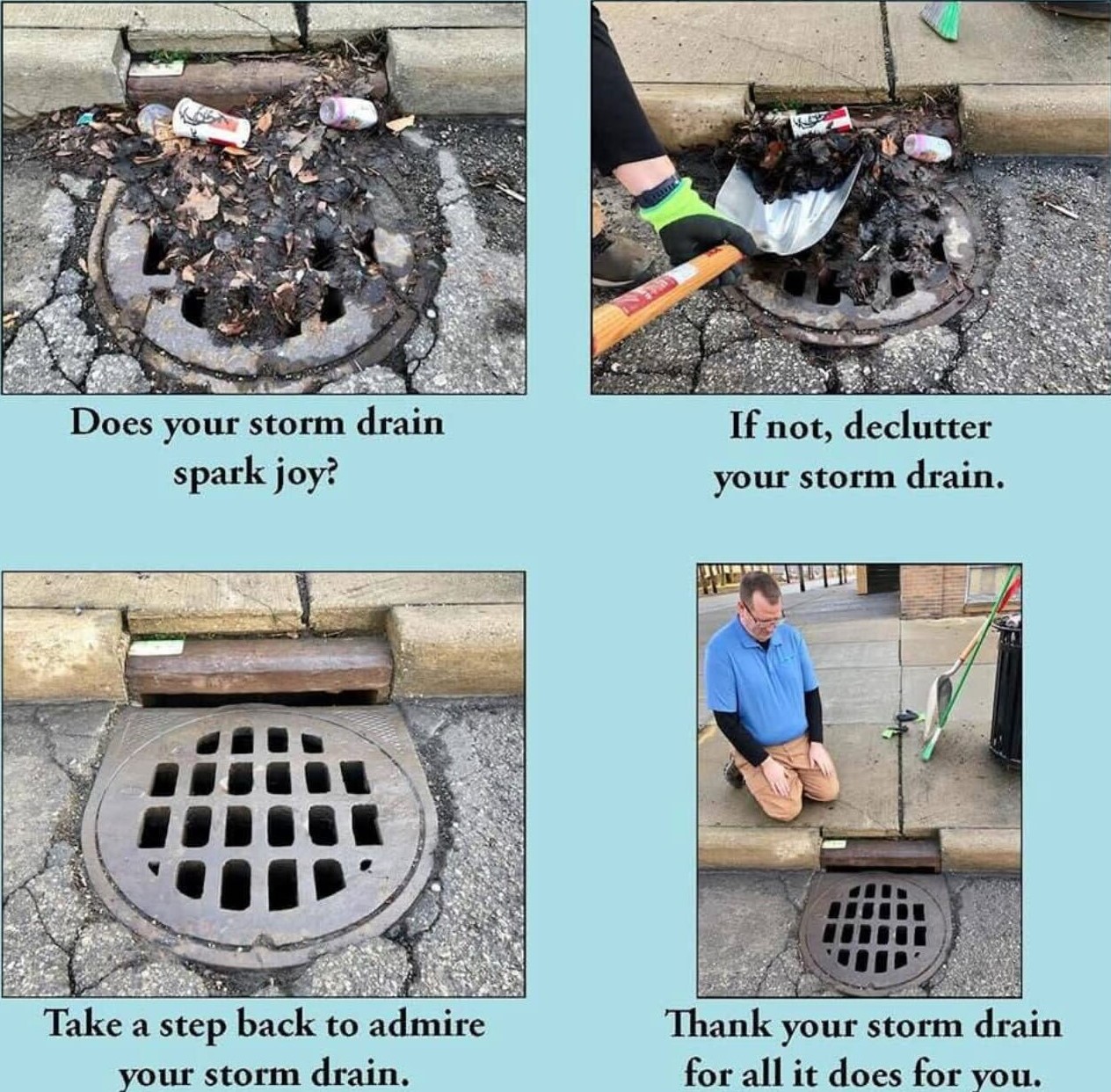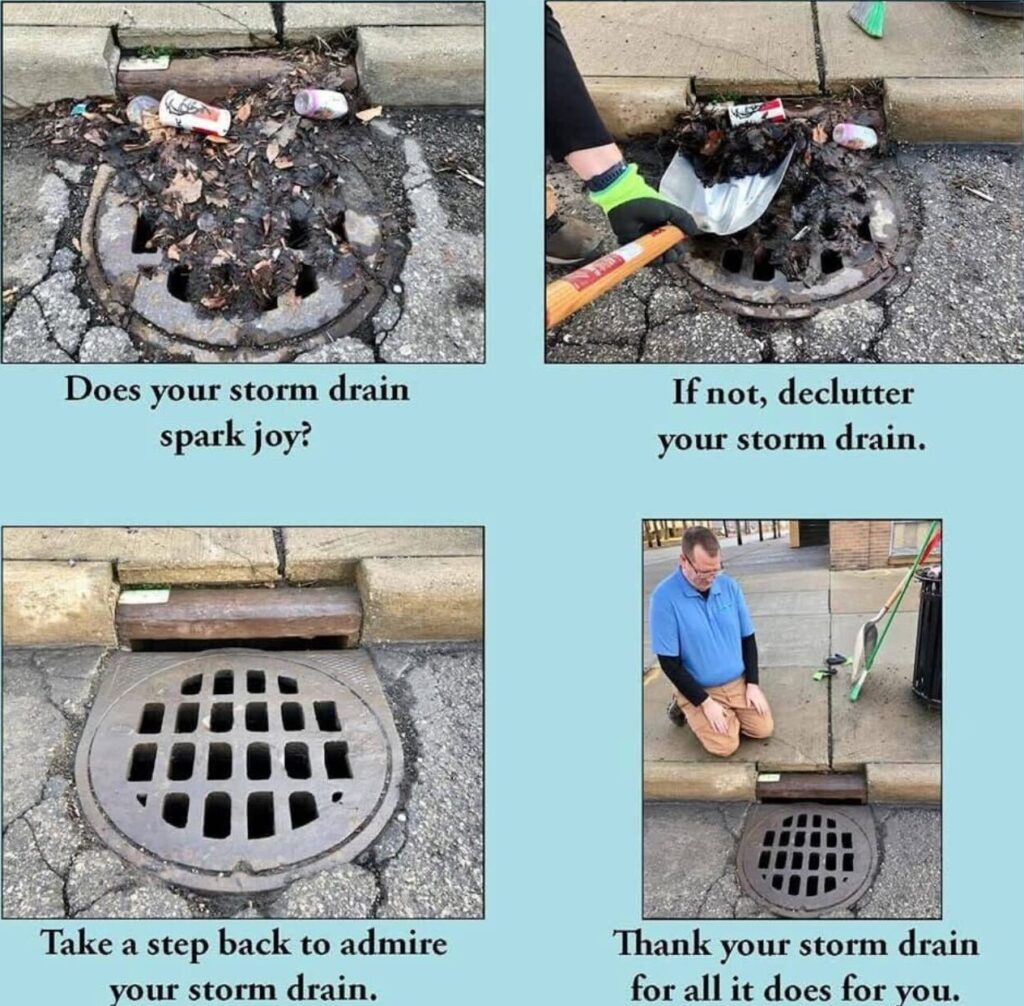
With the advent of April, rainy season is officially here—which means that we may see some street flooding!
Chicago’s sewer network uses an inlet control valve system—otherwise known as rain blockers—that limit water intake during heavy rainfalls to avoid overwhelming the storm water system and prevent sewage backup in basements. That means some amount of street flooding may be intentional for 24-48 hours after a heavy rainfall.
That said, if your street is experiencing flooding, there are a few ways you can address it!
What to do if your Street Floods
Clear Your Sewer Drains
The first step is to remove any debris from the sewer grate. 40th Ward neighbor Craig put together this helpful graphic on how to clear your storm drains:

If the sewer still isn’t draining water properly, and you suspect your drain may have an internal clog, the next step would be to submit a Sewer Cleaning Inspection Request.
Report Street Flooding to 311
If your drain is clear, and water remains on the street more than 24 hours after the rain has stopped, you can file a Water on the Street Complaint. And if you experience water in your basement due to heavy rains, you can file a Water in Basement Complaint.
If you file any of the above service requests through 311 and see that your Service Request has been closed before the water recedes, please contact our office so we can follow up!
If your street is dealing with chronic flooding, report to our office!
If your street deals with chronic flooding, please report the issue to our office! It may be that we need to escalate the issue to the Department of Water Management to check all the drains along the street. Alternatively, it may be a grading issue—i.e. the asphalt and curbs may not be appropriately directing water toward the storm drains. In that case, we may need to have the Department of Transportation (CDOT) survey it for possible curb and gutter repairs.
What to do if your Alley Floods
If your alley has a catch basin, first check the drain to see if there is any debris, and clear it if so. If the drain is clear and still not draining properly, you can file an Alley Sewer Inspection Request through 311.
If your alley is dealing with persistent flooding issues, you can submit a repair request to our office so we can consider it for repair.
However, alley repairs like this can challenging, for a couple of reasons. First, alleys that are resurfaced through traditional asphalt repaving almost always result in increased flooding in adjoining garages and yards. For that reason, alley reconstruction tends to be the best option to address flooding issues—but alley reconstruction is extremely expensive ($250-500K per alley). Our office receives one free alley reconstruction each year from the city’s Capital Improvement Fund, and we prioritize the alleys that are in the worst condition.
As always, if you have any questions on any of the above, feel free to email us at info@40thward.org, or submit a request at 40thward.org/contact!